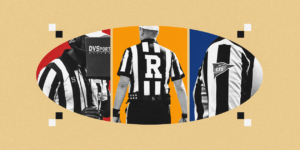When Fiona Wood moves to Perth from the United Kingdom in 1987, she was drawn to its wildlife. “Intrinsically it’s the most beautiful place,” she says, as we wander along Matilda Bay under a canopy of leaves, the gnarled trunks of Moreton laurel figs and Cape lilacs with their bursts of yellow berries. “When I first came here, I thought: ‘I can see myself sitting under these trees with my thinking cap on’.”
Almost 40 years later, she has certainly done her share of thinking on these grounds. Just across the road from Matilda Bay is the University of Western Australia, where Wood has worked since the early 90s, first as a senior lecturer, then a professor in the school of surgery and director of the Burns Research Unit. “I’m part of the furniture there,” she tells me in her warm, lilting Yorkshire-cum-Australian accent.
Wood has worn many hats over her 30-year career: plastic surgeon, clinical scientist, burn specialist, researcher, mentor. But like many scientists, she remains fixated on her next discovery — that elusive eureka moment, a chance to push the boundaries of medical knowledge into new realms. Interviewing her is like being subjected to a stream of scientific cogitation laced with self-deprecating humor. It’s dizzyingly fast, and utterly captivating.
“My staff laugh at me because I’m always trying to connect the dots – I’ll go into meetings and my brain will scan the horizon for ideas. They say ‘sometimes we join dots that shouldn’t be joined!’” she tells me, breaking into laughter. “But I’m not ashamed if I’m wrong. There is no such thing as a bad decision, as long as you learn from it.”
Wood is best known for “spray-on skin,” a groundbreaking invention that uses a patient’s own skin cells to form a new layer of skin over a burn, significantly reducing scarring. She used this technology to aid the recovery of the 28 Bali bombing victims whose lives were saved in 2002, an achievement that saw Wood named a Member of the Order of Australia the following year. Twenty years later, in January 2024, she was honored with an Officer of the Order of Australia for her distinguished service to burn medicine.
The AO joins a string of roles and accolades Wood has earned over her prolific career. In addition to her position at UWA, she is a consultant plastic surgeon at Perth children’s hospital and Fiona Stanley Hospital, director of the WA Burns Service, a National Living Treasure, former Australian of the Year and a mother of six.
As we stroll along the river past peppermint trees and a family of black swans, Wood tells me about her current fixation. She is working to find a solution to the “scarring triangle” – the physical, psychological and physiological changes in some burn victims that make them more vulnerable to future infection, disease and even death.
This long-term research project makes use of Wood’s “burn biobank”, the world’s largest collection of biological samples from children and adult burn victims, collected over time to enable longitudinal studies. There are a handful of topics that excite Wood, and this is one of them – if all goes according to plan, the biobank and its data platform will enable her team to uncover pathways to secondary disease, and tailored, individualized medical care deliver in ways that have never been done before.
“Customized medicine, precision medicine. This is the future,” says Wood, eyes sparkling with enthusiasm. “But how do we actually do it? We need an enormous amount of information so that we know where you sit on this massive spectrum, whether it’s your lipids or your metabolites, your amino acids, your DNA – which requires great mathematical ability and machine learning.”
“We’re getting closer,” she continued, taking her first determined bite. “It’s ‘down the hatches, get a little more money, keep going’.”
There was one patient in particular who set her on this line of inquiry. In 2003, Wood saved the life of a seven-year-old boy who had suffered significant burns in a farming accident. Three years later he died of a rare liver cancer.
“At the time I was told it was just bad luck,” she says. “And it didn’t go well with me. I can nag for the UK and Australia, and if I have a bee in my bonnet, I don’t give up.”
Since 2010, Wood and her team have published more than 30 studies examining the relationship between burns and lifetime risk of cancer, inflammatory diseases, mental health and other pathologies – proving that there is indeed a correlation. Their next step is to find out why.
“We are very much in the weeds at the moment. We look at the brain, we look at the immune system and we look at the inflammatory profile. If we can find out who is vulnerable and why and what the mechanism is, then we can start treating it.”
We sit down on a bench under the shade of a floating lemon-scented gum, to get some rest from the heat. It’s already a toasty 29C at 8.30am, and a thick cloud of cloud hangs overhead. Wood tells me about the work she has done to investigate the role of the mind in burn recovery, and how neurology can enable us to “think ourselves whole”.
While the idea may seem strange to some, Wood believes neurology could be the holy grail of burn medicine. Currently, very little is known about the brain’s response to severe burns, but, as with many of the great mysteries in her research, this only serves to drive her forward.
“We’re experimenting with transcranial magnetic stimulation,” she says. “Many people have started using this technique in depression and post-stroke rehabilitation, but understanding how we can use neuroplasticity to enable burn recovery will be a big step forward.”
The conversation continues to map an astonishing breadth of scientific thought, with Wood effortlessly navigating between regenerative medicine, artificial intelligence and biotechnology – just a few of the new frontiers she has her sights set on.
Among them, Wood is making progress with a series of new world-first surgical tools. The 3D bioprinter produces cells that replace the dermis, the complex secondary skin layer, to provide a “more complete skin reconstruction.” Wood believes it will be ready for a human pilot study in the middle of this year.
Also in development is the iKnife, a new tool that will enable surgeons to distinguish between living and dead tissue, one of the greatest challenges of burn surgery. “I’m so excited about this project, it’s going to put my retirement years back,” says Wood. “I think this is a paradigm shift, but there is still a lot of work to be done.”
Further down the line, Wood and her team will explore options for commercialization, much as they did for injectable skin, which was brought to market by Avita Medical. While the company was founded by Wood, she does not own it, and any royalties collected are channeled back into research.
We go back to UWA, where she is holding her next meeting. Breaks are few and far between for the indefatigable Wood, who spends her days between university, Fiona Stanley Hospital and Perth Children’s Hospital. As we walk along the river, I ask her about the many patients she has saved from life-threatening injuries, and what it feels like to see them fully recover.
“There was a woman, a triathlete, who suffered shocking burns from the Bali bombings,” she says. “When she woke up from her coma, she asked me ‘I won’t run, will I ever walk again?’ and I said: You will walk, you will run, you will run.”
Amazingly, the woman beat Wood in an ironman in Busselton a few years later. “There wasn’t a dry eye when we hugged over the finish line that day.”
We cross the road to the tall limestone buildings of UWA, a second home for Wood for the last three decades. “You know, it wasn’t until about ten years after the Bali bombings that I realized, maybe I have some kind of vicarious trauma because I found it really challenging to talk about,” she says.
Wood treated 31 survivors of the 2002 blast, who were flown to Royal Perth Hospital with up to 90% burns, fatal infections and delayed shock. Her team of 19 surgeons and 130 medical staff worked all day to save them. But she lost three patients, and their deaths have never left her.
“There are people I will never forget, and there are situations that are disturbing, and they are part of me. The only way I know how to cope is to engage aggressively in this research, to keep discovering.”
“And somewhere along the line we will change things and we will change them for the better.”

